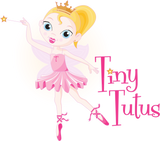When They Just Stand There: Why Observation is Powerful in Early Dance
When They Just Stand There: Why Observation is Powerful in Early Dance
It’s completely normal for young children to stand and watch during their first few dance classes. Observation is a powerful form of learning, especially in early childhood. At Tiny Tutus, we honour this as an important first step in building confidence and classroom readiness.
Standing Still Doesn’t Mean Nothing is Happening
You arrive at class, hoping for twirls and smiles.
Instead, your little one stands frozen at the back of the room, quietly watching.
She doesn’t join in. Doesn’t smile. Doesn’t move.
And you start to panic a little: Is this working?
Here’s the answer:
Yes. Watching is working.
At Tiny Tutus, we know that observation is one of the most powerful learning tools in early childhood, especially in a new or unfamiliar environment.
Why Some Children Need Time to Watch First
In the first few weeks of dance class, it’s common to see children:
- Standing still at the back of the room
- Watching the teacher intently
- Refusing to join the circle
- Quietly following with their eyes, but not their feet
This doesn’t mean they’re disinterested or not ready.
It means they are:
- Processing
- Learning the routine
- Decoding the social structure
- Making sure it feels safe before they take a risk
Some children learn by doing.
Others learn by watching first, then doing.
Both are valid.
The Science Behind Observation as Learning
Research in early childhood development shows that:
- Children develop confidence through repetition and familiarity
- Observation allows the brain to mirror actions and encode sequences
- Social watching helps children learn group norms without pressure
- Emotional safety is a prerequisite for active participation
So if your child is standing back and observing, they’re:
- Learning what comes next
- Building internal confidence
- Rehearsing in their head before their body joins in
That’s not failure. That’s foundational learning.
Why We Let Children Join When They’re Ready
At Tiny Tutus, we don’t coax, pressure, or push.
Our teachers know that the child who stands still today is often the one dancing confidently tomorrow.
We offer:
- A calm, repeatable structure
- Kind encouragement without spotlighting
- An open studio so your child can look back and see you, their trusted constant
Because we believe that confidence grows best in safe soil.
And sometimes, standing still is just a seed getting ready to sprout.
What You Can Do as a Parent
- Don’t rush the process.
- Some children need one class. Others need five. That’s okay.
- Avoid over-prompting.
- Let your child watch without feeling the pressure to perform.
- Celebrate observation.
- After class, try saying:
- “I saw how closely you watched the teacher!”
- “You looked so focused during circle time.”
- Keep showing up.
- Consistency builds familiarity, and familiarity builds confidence.
Tiny Tutus: A Place Where Watching Counts, Too
We’ve seen it over and over again, the quiet watcher who, three weeks later, surprises everyone with a perfect plié.
The little one who waited in the wings then danced her heart out in Week 6.
The child who didn’t say a word for a month, then suddenly asked for a tutu in her favourite colour.
At Tiny Tutus, we don’t rush that magic.
We make space for it.
We'd love to welcome you to Tiny Tutus! Book a Trial Class today or Learn More About Our Program here
